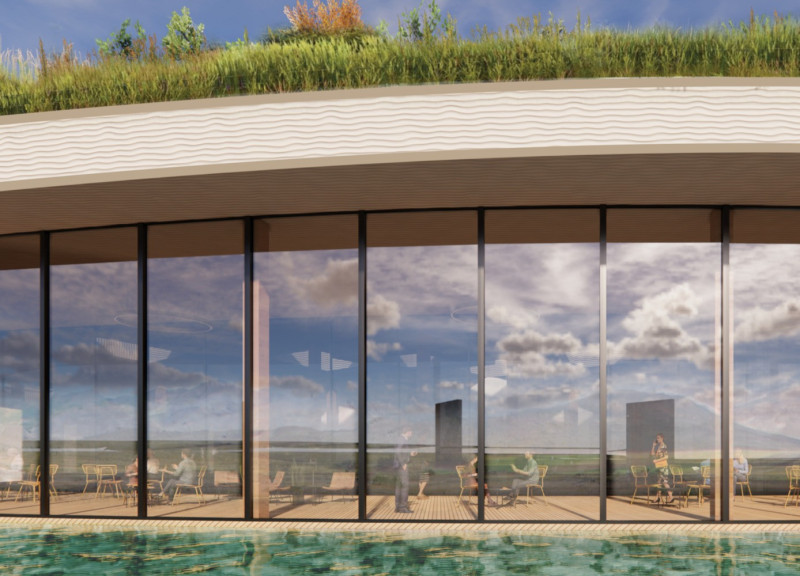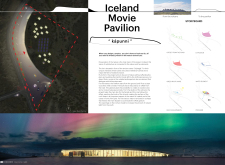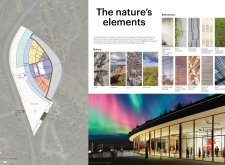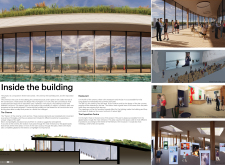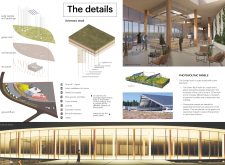5 key facts about this project
At its core, the project embodies a philosophy of harmony with nature, aiming to minimize environmental impact while maximizing user experience. The design reflects an organic form that resonates with the rugged landscape, emphasizing the integration of the built environment and its geographical context. The architecture serves not only as a functional space for entertainment and social activities but also as a landmark that celebrates the unique characteristics of Iceland’s natural habitat.
The pavilion comprises distinct yet interconnected areas, each catering to specific activities. The cinema occupies the central part of the structure, featuring high ceilings and a façade that mimics the local rock formations. Natural light plays a significant role here, enhancing cinematic experiences while promoting energy efficiency through its design. The seating layout allows for various viewing angles, showcasing a commitment to visitor comfort and engagement with the film content.
Adjacent to the cinema, the bar and restaurant area invites patrons to relax and socialize. This space is designed with large, panoramic windows that not only provide breathtaking views of the Icelandic landscape but also create an intimate atmosphere for gathering. The selection of materials here, particularly the warmth of wood combined with expansive glazing, fosters a welcoming environment that encourages community connections.
In addition to the cinema and dining spaces, the pavilion includes an exposition center that can adapt to a variety of functions, from art exhibitions to community events. The versatility of this space demonstrates an understanding of the evolving needs of the community, making it a dynamic part of the architectural design.
An essential characteristic of the Iceland Movie Pavilion is its thoughtful material palette, which highlights sustainability and durability. Low-carbon concrete forms the structural base of the building, allowing it to withstand the elements while reducing the environmental footprint. Wood elements are employed throughout the pavilion, adding warmth and tactile richness to the interior spaces. The extensive use of glass serves to blur the boundaries between indoors and outdoors, creating a seamless connection that enhances the user experience. Furthermore, the green roof not only contributes to insulation but also promotes biodiversity, showcasing an innovative approach to sustainability that aligns with contemporary architectural practices.
The project’s unique design strategies underscore a commitment to environmental stewardship and cultural representation. The organic shape of the pavilion, inspired by the surrounding landscape, integrates the built form with its context, establishing a dialogue between architecture and nature. This approach not only respects the environment but also provides an enriching experience for visitors, allowing them to engage with both the cultural and natural elements of Iceland.
The Iceland Movie Pavilion stands as an example of how architecture can effectively respond to its environment while fulfilling community needs. The thoughtful integration of functional spaces and sustainable materials encourages a deeper connection between the visitors and the landscape, reinforcing the idea that architecture is more than just a physical structure; it is an entity that fosters interaction and appreciation for the surrounding world.
For those interested in exploring this architectural endeavor further, reviewing the architectural plans, sections, and design ideas will yield valuable insights into the innovative approaches employed in this project. The Iceland Movie Pavilion is a testament to the potential of architecture to create spaces that are not only functional but also enriching and reflective of their natural surroundings.


